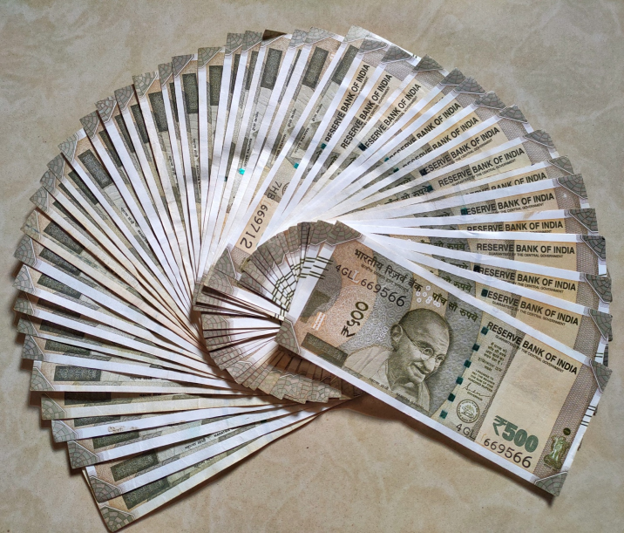Is the Indian Rupee set for a third straight year of fall against the USD or will it make a comeback in 2021?

Image source: PixaHive
2020 has been a highly volatile year for the major international currencies, as international trade and supply chain disruptions combined with mixed investor sentiment led to extensive fluctuations.
As an aftermath of the pandemic, the world's reserve currency the U.S. dollar (USD), has declined steeply throughout the past year, making it the worst-performing currency among the G10 currencies.
This is reflected in the US Dollar Index's 7.53% decline over the past year. The Indian Rupee (INR) did not fare any better, as it was the worst-performing currency in the Asian subcontinent over the past year.
INR and USD - 2020 Performance
India has been grappled with the worst recession in history, with its GDP contracting 23.9% year-over-year in the April- June quarter, and 7.5% year-over-year in the July - September quarter. This compares to the United States' 9.1% decline in the fiscal second quarter, anda record 33.1% annualized growth in the fiscal third quarter.
However, despite the biggest contraction on record, India enjoyed a plethora of foreign direct investments (FDI). According to data released by the Department for Promotion of Industry and Internal trade, in the April - August period, foreign fund inflows crossed the $500 billion mark, reflecting investor optimism regarding the country's recovery potential post-pandemic.
Foreign equity inflow rose 21% year-over-year in the April - October period to $35.33 billion. The interest rates observed by the Reserve Bank of India (RBI) is substantially higher than the Federal Reserve's near-zero rates, which can be accredited as one of the reasons behind the equity fund inflows. Also, the impressive gains of the Indian stock indexes contributed to the high volume of fund inflows. Sensex gained 19.03% over the past year, beating S&P 500's 16.41% returns over the same period.
However, the RBI kept on buying US dollars for its reserves over this period, leading INR to decline against the greenback. This was done primarily to promote the domestic export industry, which was heavily affected by the pandemic-induced barriers to international trade. As a result, INR declined 2.85% against the USD over the past year.
Also, the pandemic has propelled an anti-Chinese sentiment among the masses and governments alike, resulting in a structural transformation of the global industrial sector from China to other developing economies. The United States, along with seven other countries, found the Inter-Parliamentary Alliance on China in June 2020, with the aim to curb the global interdependence on the Chinese economy, which manufactures a third of the global industrial output.
However, China's economic recovery has been miraculous, while the US is still struggling to control its surging coronavirus infections. This has led investors to lose faith in the USD, thereby contributing to the currency's decline.
2021 Outlook
The United States has assumed a dovish monetary stance and quantitative easing measures to recuperate from the economic slump, which is likely to maintain pressure on the USD. The country passed two of the largest fiscal-stimulus bills in the past year, totaling nearly $3 trillion. The incoming Biden administration and the Democratic majority in both the houses of Congress imply another round of fiscal stimulus plans is one the cards, thereby further depreciating the US Dollar.
India, on the other hand, is expected to recover gradually in 2021, with a substantial rise in GDP growth and consumer spending. The Center for Economics and Business Research predicts India to expand by 9% in the current year.
Also, India's staggering development in the domestic industrial sector has exacerbated investor sentiment over the country's growth potential, which should further channel funds from the developed economies.
Though India pulled out of Regional Comprehensive Economic Partnership (RCEP) last year, citing economic and sustainability concerns, the country has a provision to rejoin at a later date, at its discretion. This free trade deal signed between 15 countries in the ASEAN region, forms the world's largest free multilateral deal.
India's decision to rejoin the group should bolster its economic growth significantly, particularly following the 2020 recession, while improving its reputation in the global economy. If India consolidates its position as a major economy crucial to international trade by joining this trade bloc, the Indian Rupee should appreciate.
While this should allow INR to gain sharply against the US dollar over the next couple of months, the actions taken by the RBI might reverse this growth. The RBI has propagated its aim to keep its export markets competitive in the international region while curbing import- driven inflation.
According to a report from FX Leaders, the USD/INR pair has been retreating lower since last April and forecasts the price of Indian Rupee to move lower until it reaches the 20 monthly SMA (simple moving average) post which it will resume a bullish trend.
However, it should be noted
that India's currency sterilization policy has been noted by the United States,
which placed the former under the currency manipulator watchlist late last year.
Following this announcement, INR has increased slightly, by 0.69%, against the
USD. Provided the Indian central bank does not intervene in the floating
exchange rates over the next couple of quarters, INR should gain significantly
against the US-Dollar in 2021.




